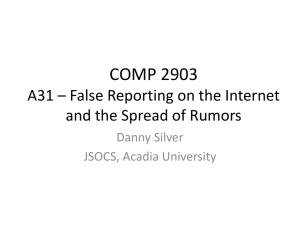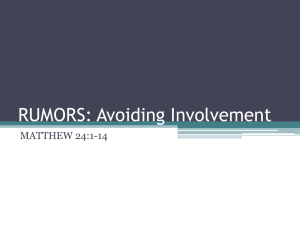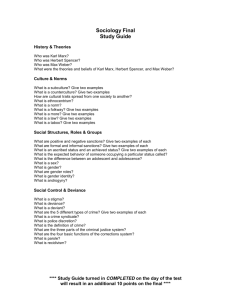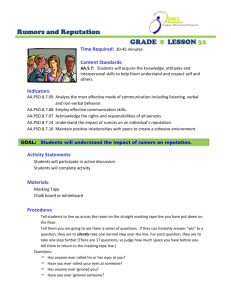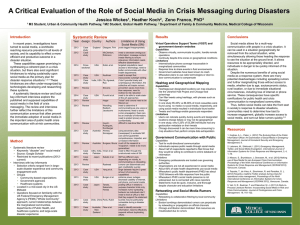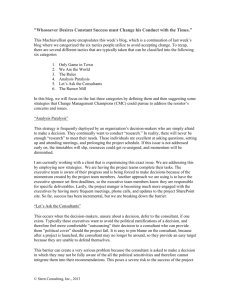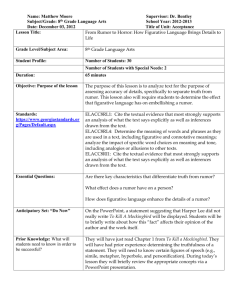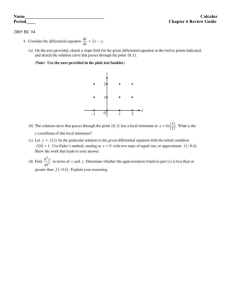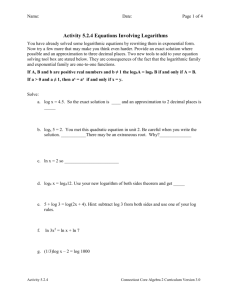Consider the Source: Rumors GRADE LESSON
advertisement
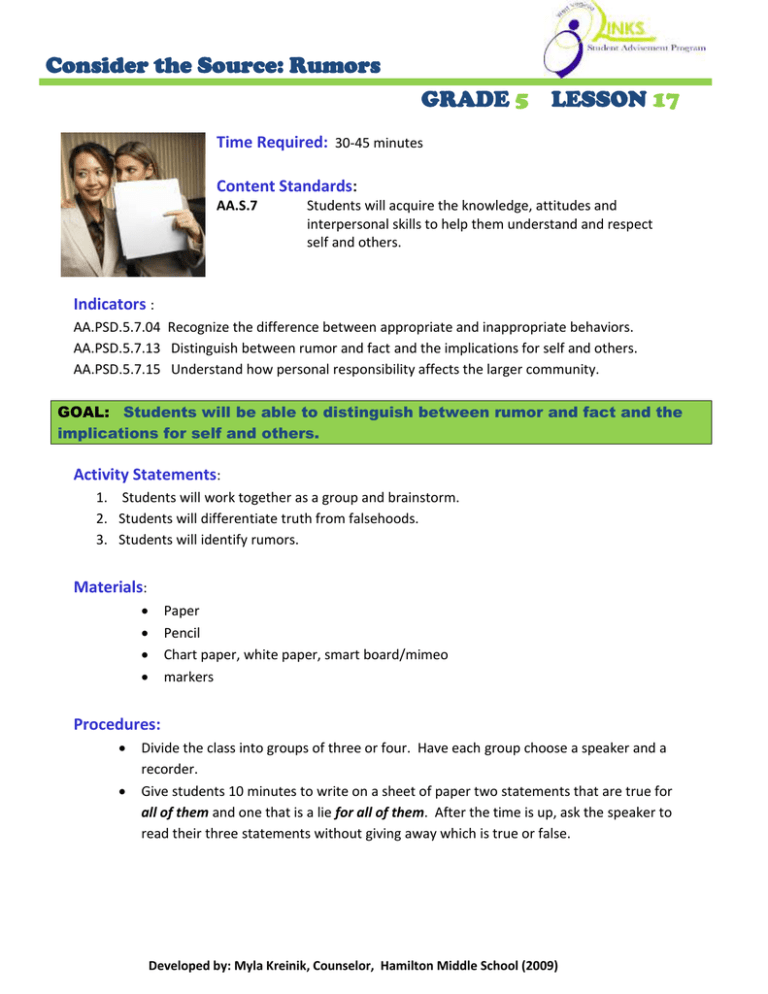
Consider the Source: Rumors GRADE 5 LESSON 17 Time Required: 30-45 minutes Content Standards: AA.S.7 Students will acquire the knowledge, attitudes and interpersonal skills to help them understand and respect self and others. Indicators : AA.PSD.5.7.04 Recognize the difference between appropriate and inappropriate behaviors. AA.PSD.5.7.13 Distinguish between rumor and fact and the implications for self and others. AA.PSD.5.7.15 Understand how personal responsibility affects the larger community. GOAL: Students will be able to distinguish between rumor and fact and the implications for self and others. Activity Statements: 1. Students will work together as a group and brainstorm. 2. Students will differentiate truth from falsehoods. 3. Students will identify rumors. Materials: Paper Pencil Chart paper, white paper, smart board/mimeo markers Procedures: Divide the class into groups of three or four. Have each group choose a speaker and a recorder. Give students 10 minutes to write on a sheet of paper two statements that are true for all of them and one that is a lie for all of them. After the time is up, ask the speaker to read their three statements without giving away which is true or false. Developed by: Myla Kreinik, Counselor, Hamilton Middle School (2009) Consider the Source: Rumors GRADE 5 LESSON 17 Next, have the remaining students vote on which statement is the lie. Continue until all groups have taken their turns. (You may wish to use a chart or board to map results.) Whole class discusses activity. Discussion: What is a lie? Untruth, falsehood, tall tale, an assertion of something known or believed by the speaker to be untrue with intent to deceive: an untrue or inaccurate statement that may or may not be believed true by the speaker; something that misleads or deceives How difficult was it to tell the difference between the truth and the lie? What is a rumor? A statement or report current without known authority for its truth; statements being spread that have no fact behind them What is the difference between a lie and a rumor? How do rumors get “out of control”? How do you feel when you hear people spread rumors? Do you continue the rumor? Why or why not? How important is it to be honest? Additional Resources: Rumors and Lies, Gossip and Spies. Sunburst Visual Media, 2005. Rumor Mill, The: How Do You Know It’s True? Sunburst Visual Media, 2004. Boulden, James. Rumor and Revenge. Weaverville, CA: Boulden Publishing, 1996. Alternate Activity: Play the game of Telephone 1. Have students sit in a large circle. Tell them that they are going to participate in the “Telephone Game.” 2. Ask a volunteer to think up a brief statement or story and whisper it into the ear of the person sitting to his or her right. Tell the person who has just heard the statement to whisper it to the next person. This procedure continues until everyone has heard the statement. Have the last student say aloud what he or she heard and then have the student who started the story tell what the original statement or story actually was. Have students compare the original to the final statement and note any changes. Developed by: Myla Kreinik, Counselor, Hamilton Middle School(2009) Consider the Source: Rumors GRADE 5 LESSON 17 3. Have the group explore ways that a story can change as it is retold and examine how this can lead to rumors. Use the following discussion questions as a guide: a. What are some possible reasons why a story changes as it is repeated? (e.g. people tend to remember sharp details and forget those that were less clear; people fill in gaps to make a story more believable or closer to what they think it should be; people exaggerate to make a story funnier or more interesting than it really is.) b. What influences how we hear and interpret information? (e.g., our experiences, interests, perspectives) c. Do you think that there are times when people hear many different interpretations of the same story and begin to question which interpretation is accurate? Explain your thinking. d. If everyone sees and hears something a little differently, how do we know when a story is accurate? How can we sort out the truth from the changes that can occur when a story is retold? What can we do to check the accuracy of a story? (e.g. look for first hand sources; try to get multiple perspectives) e. what is the danger of not knowing the truth? f. What is a rumor? g. Do you think that some rumors get started innocently? Explain your thinking. h. Do you think there are times when rumors are started intentionally to hurt someone or to start trouble? Give examples. i. What harm can come from believing a rumor? What harm can come from repeating a rumor? j. What situations might cause rumors to be spread? 4. Working individually or in small groups, have students design posters that alert others to the harm in spreading misinformation or rumors. Display posters in the classroom. 5. Have students research some of the rumors that have spread following global world tensions, e.g. following the attacks on the World Trade Center and the Pentagon. Have students report their findings to the class. Adapted from A WORLD OF DIFFERENCE® Institute Anti-Bias Study Guide (Elementary/ Intermediate Level). 2000. New York, NY: Anti-Defamation League. Extension Activity: Make a list of rumors you hear over 1 school day. Bring them in to class the day after tomorrow. We will compare the rumors you bring in, and discuss why they are rumors. Developed by: Myla Kreinik, Counselor, Hamilton Middle School(2009)
